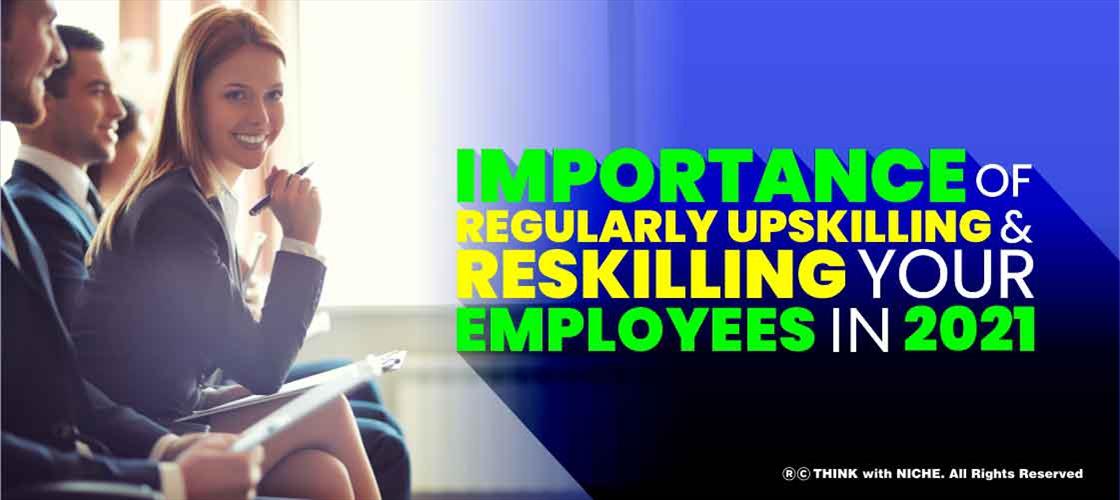
Post Highlights
Employees with the requisite skill sets (both hard and soft talents) are the torchbearers of organizational success when business models evolve and technology improves. As a result, enterprises all over the world are embracing internal mobility through upskilling and reskilling in increasing numbers.Recruiters will hire fewer individuals in the next years, according to Linkedin's Global Hiring Trends Report, instead of focusing on building and borrowing more. #ThinkWithNiche
Upskilling and reskilling employees is important for a company's
survival, particularly in times like ours when pandemics are a
possibility. Investing in current employees ensures that quality control
and retention are maintained throughout internal mobility.
Upskilling and reskilling are educational opportunities offered by a company to its employees as part of its L&D strategy. While it's simple to conflate the two, they refer to two distinct concepts:
·
Upskilling entails providing training that improves an employee's
present skill set, allowing them to advance in their current role and
add more value to the organization's work.
· Re-skilling is the process of retraining a person for a new job. This
method is typically employed when an employee's position has become
obsolete and the firm wishes to retain the employees by training them in
a new subject.
Implement A Performance Enablement Solution-A performance enablement program can help you reach your goal of creating a resilient and flexible workforce. Performance enablement systems give useful insights by connecting performance data with an employee's individualized learning experience.
A performance enablement program, in its most basic form, enables you to
move beyond a single yardstick of performance evaluation by assisting
workers in growing and excelling in their roles in their own unique
ways. A performance enablement program is shaped by a few factors:
· Managerial Effectiveness: Managers
must be leaders and trusted advisors to their teams.Foster a learning
ecosystem that relies on peer learning with nugget learning.
Encourage Self-Training- A
bottom-up method is a well-known upskilling strategy that has proven to
be effective. This is similarly related to a performance enablement
strategy.
Managers, for example, can speak directly with their staff to learn
about their specific interests and areas where they'd like to improve.
Learners are more motivated and accountable as a result of this, and
they are more in control of their learning.
This also works well for remote teams. By removing barriers and providing rewards, managers can encourage people to establish their own learning paths.
· Employees that learn new skills on their own time should be rewarded.
· Set aside time for paid training.
· Allow employees to attend workshops and seminars during work hours if they like.
Focus On Soft Skills Development- Hard skills are a major priority for many firms when hiring new employees. Soft talents, on the other hand, have a longer shelf life and, in the long run, demand special attention.
With digitization, automation, and the evolution of
enterprises, it's critical for employees to stay connected to the one
thing that computers or artificial intelligence can't replace: the human
aspect in interactions. One of the most compelling reasons for
companies to invest in soft skill training for their staff is this. As
companies try to adapt to changing markets, employees are challenged to
innovate, address new business difficulties, and shorten their learning curve for new technology adoption.
Encourage Microlearning- As the CEO of a company, it's likely that you've suddenly realized the value of upskilling and want to make significant changes right soon. Remember, life isn't a one-day Amazon delivery, and good things take time, in other words, heavy workloads and jam-packed schedules might make upskilling and learning difficult. The best way to do this is to implement an upskilling program in short, bite-sized sessions. Even distant teams can benefit from this because bite-sized modules and seminars are easy to host and share online. Use a cloud-based LMS to store your learning content so that your employees may access it at any time.
Conclusion- Like all good things, upskilling and reskilling takes time. If executed with strategic accuracy, they can deliver huge benefits to your firm. For all ecosystems, there is no one-size-fits-all answer, so rely on trial and error and include your employees in the decision-making process.
Comments
Post a Comment